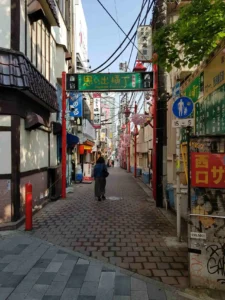The Comprehensive Guide to Public Transport in Japan
When it comes to getting around Japan, the public transport system is nothing short of remarkable. Efficient, punctual, and incredibly well-connected, it’s a vital part of daily life for millions of people. Whether you’re a tourist exploring the country’s rich culture and stunning landscapes or a resident commuting to work, Japan’s public transport offers a seamless and convenient travel experience.
In this comprehensive guide to public transport in Japan, we aim to help you navigate Japan’s intricate transport network in 2025. From the lightning-fast Shinkansen (bullet trains) that zip between major cities to the extensive subway systems in Tokyo, Osaka, and beyond, we’ll cover everything you need to know. Although we have personally experienced the subways and Shinkansen, we’ve gathered detailed information on other modes of transport like buses, taxis, and ferries to provide a complete picture.
With the recent updates and improvements introduced in 2025, it’s the perfect time to explore Japan using its world-class public transport. Whether you’re planning a trip or looking to make your daily commute more efficient, this guide to public transport in Japan will be your go-to resource for all things related to public transport in Japan. Let’s dive in and discover the best ways to travel across this fascinating country.
1. Overview of Japan’s Public Transport System
Japan’s public transport system is renowned for its efficiency, punctuality, and extensive network. Whether you’re in a bustling metropolis like Tokyo or a quaint rural town, you’ll find that getting around is a breeze. The backbone of this system is its trains, which include everything from local commuter trains to the famous Shinkansen bullet trains that can whisk you across the country at speeds of up to 320 km/h (200 mph).
Complementing the trains are the vast subway systems found in major cities. We’ve personally used the subway system in Tokyo and found it incredibly easy to navigate, even as a family with children. The stations are well-signposted, and the trains run frequently, making it simple to travel across the city’s expansive urban landscape. In addition to trains and subways, Japan boasts an extensive bus network, ensuring that even areas not served by rail are easily accessible.
For more flexible travel, taxis are readily available and offer a reliable way to get to your destination, though they can be more expensive than other options. Ferries also play a crucial role in connecting the various islands that make up Japan, offering scenic and leisurely travel alternatives.
In 2025, Japan’s public transport system has seen several updates aimed at enhancing passenger convenience and sustainability. These include new train lines, upgraded facilities, and increased integration of digital payment methods. With such a comprehensive and continually improving transport network, travelling around Japan is both straightforward and enjoyable.
If you are looking for Japan’s must visit attractions then click here
2. Trains and Shinkansen (Bullet Trains)
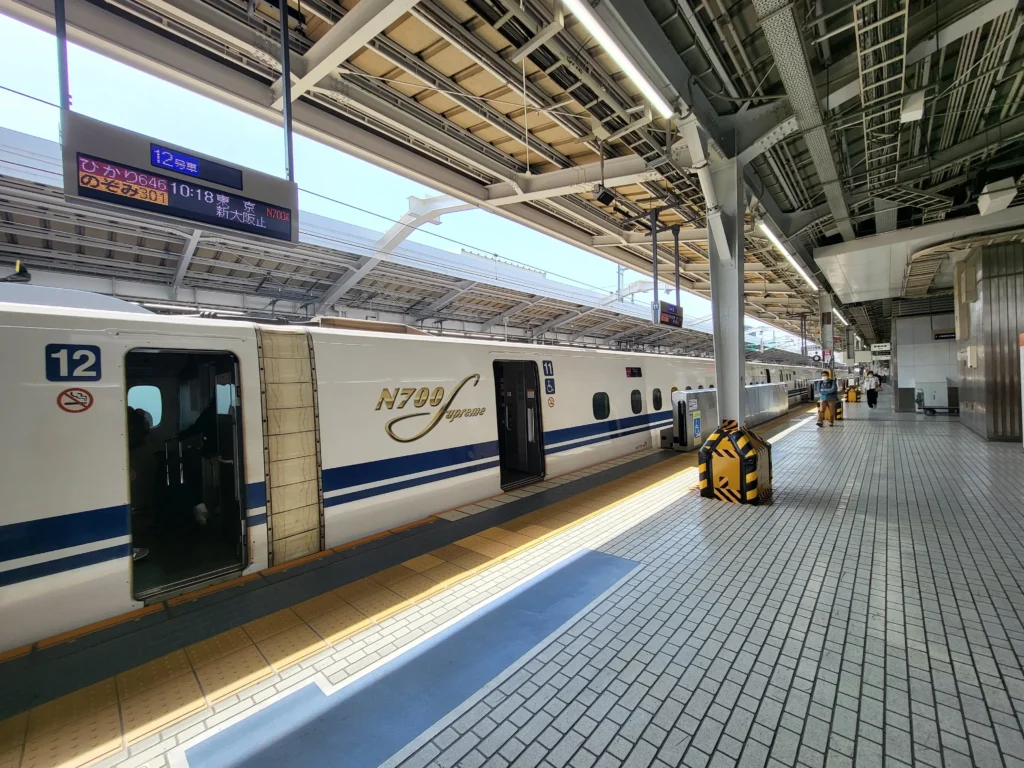
Trains and Shinkansen are the heart of Japan’s public transport system, providing an unparalleled travel experience. The Shinkansen, or bullet train, is a symbol of Japan’s technological prowess and efficiency. We had the pleasure of using the Shinkansen during our recent trip to Japan in March 2024, travelling from Tokyo to Osaka and back. The journey was seamless, with the train gliding along at speeds up to 320 km/h (200 mph), making the trip quick and comfortable.
The Shinkansen network covers most of Japan, connecting major cities and regions with unparalleled speed and efficiency. Key routes include the Tokaido Shinkansen, which links Tokyo, Nagoya, Kyoto, and Osaka, and the Sanyo Shinkansen, extending to Hiroshima and Fukuoka. The convenience of the Shinkansen is further enhanced by its punctuality, with trains departing and arriving on time to the minute.
For those planning multiple trips, the JR Pass is a valuable option. Available to foreign tourists, the JR Pass offers unlimited travel on JR trains, including the Shinkansen, for a set period. This can be a cost-effective way to explore Japan, especially if you plan to visit multiple cities.
Local trains also play a vital role, connecting suburban areas and smaller towns to the larger urban centres. These trains are frequent, reliable, and essential for daily commutes. In 2025, new train lines and services have been introduced, further expanding the already impressive rail network.
Overall, whether you’re travelling long distances on the Shinkansen or navigating the local railways, Japan’s train system is designed to make your journey smooth and efficient.
If you want to know more about the Shinkansen then click here
3. Subways
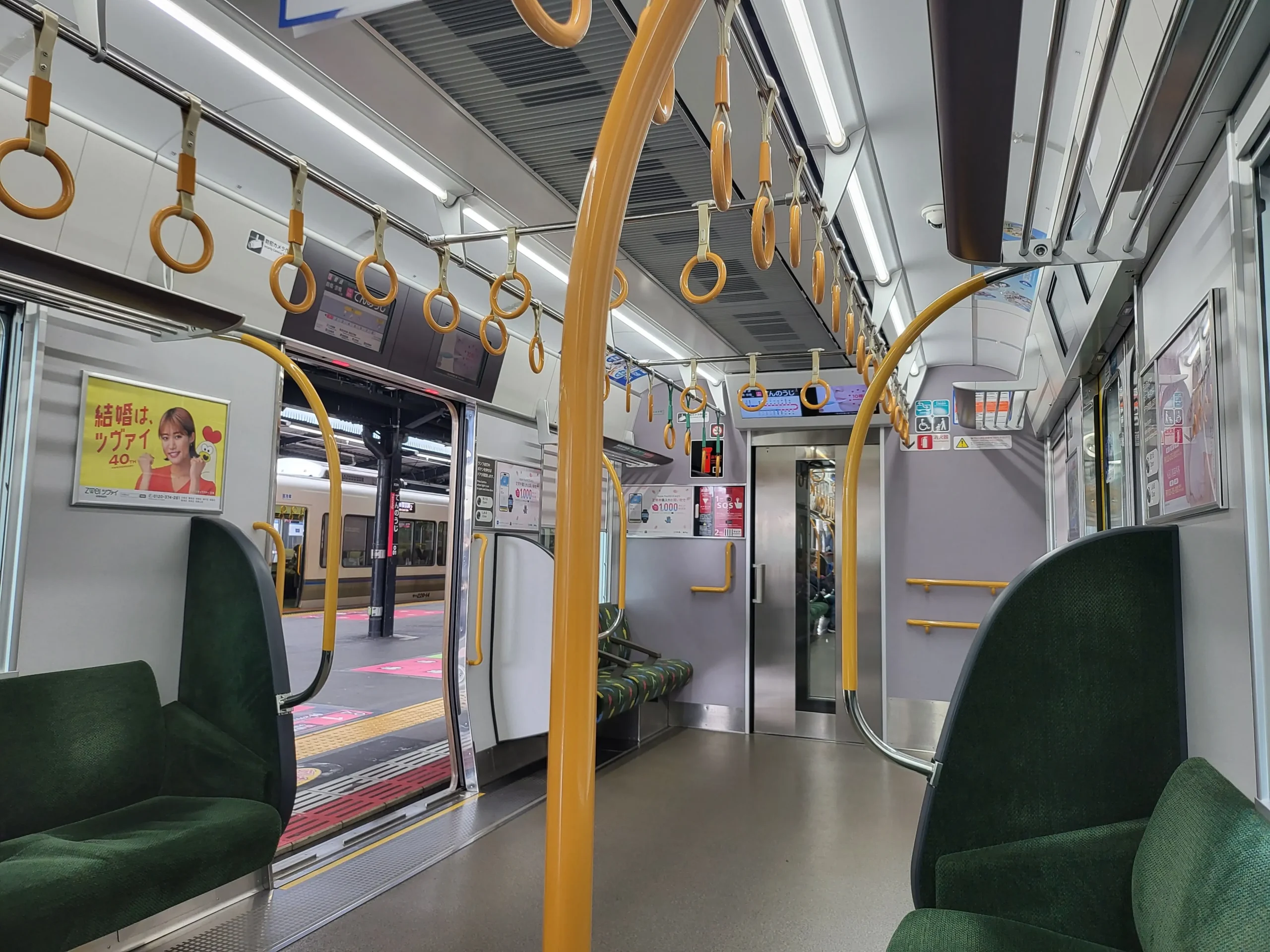
Subway systems are essential components of public transport in major Japanese cities like Tokyo and Osaka, offering efficient and extensive coverage throughout urban areas. Personally, we have navigated both Tokyo’s and Osaka’s subway systems, finding them remarkably convenient and user-friendly.
Tokyo’s subway network is one of the most extensive and busiest in the world, comprising several interconnected lines operated by different companies. The stations are well-marked with English signage, making it relatively easy for non-Japanese speakers to find their way around. Osaka’s subway system, while slightly smaller than Tokyo’s, is equally efficient, connecting key areas of the city with frequent and reliable service.
Using the subways in Japan is straightforward due to the clear route maps, electronic displays showing train arrivals, and announcements in multiple languages. Passengers can purchase tickets from vending machines or use IC cards like Suica or Pasmo for seamless travel. For travellers from outside Japan, a convenient option is the Welcome Suica card, valid for 28 days, which can be used on subways and other forms of transport. These IC cards also allow for easy transfers between subway lines and other modes of transport, eliminating the hassle of calculating fares for each leg of the journey.
In 2024, both Tokyo and Osaka have seen enhancements in their subway systems, such as improved accessibility features and digital innovations to streamline passenger flow. These continuous improvements ensure that subway travel remains a comfortable and efficient option for residents and visitors alike in Japan’s bustling urban centres.
4. Buses
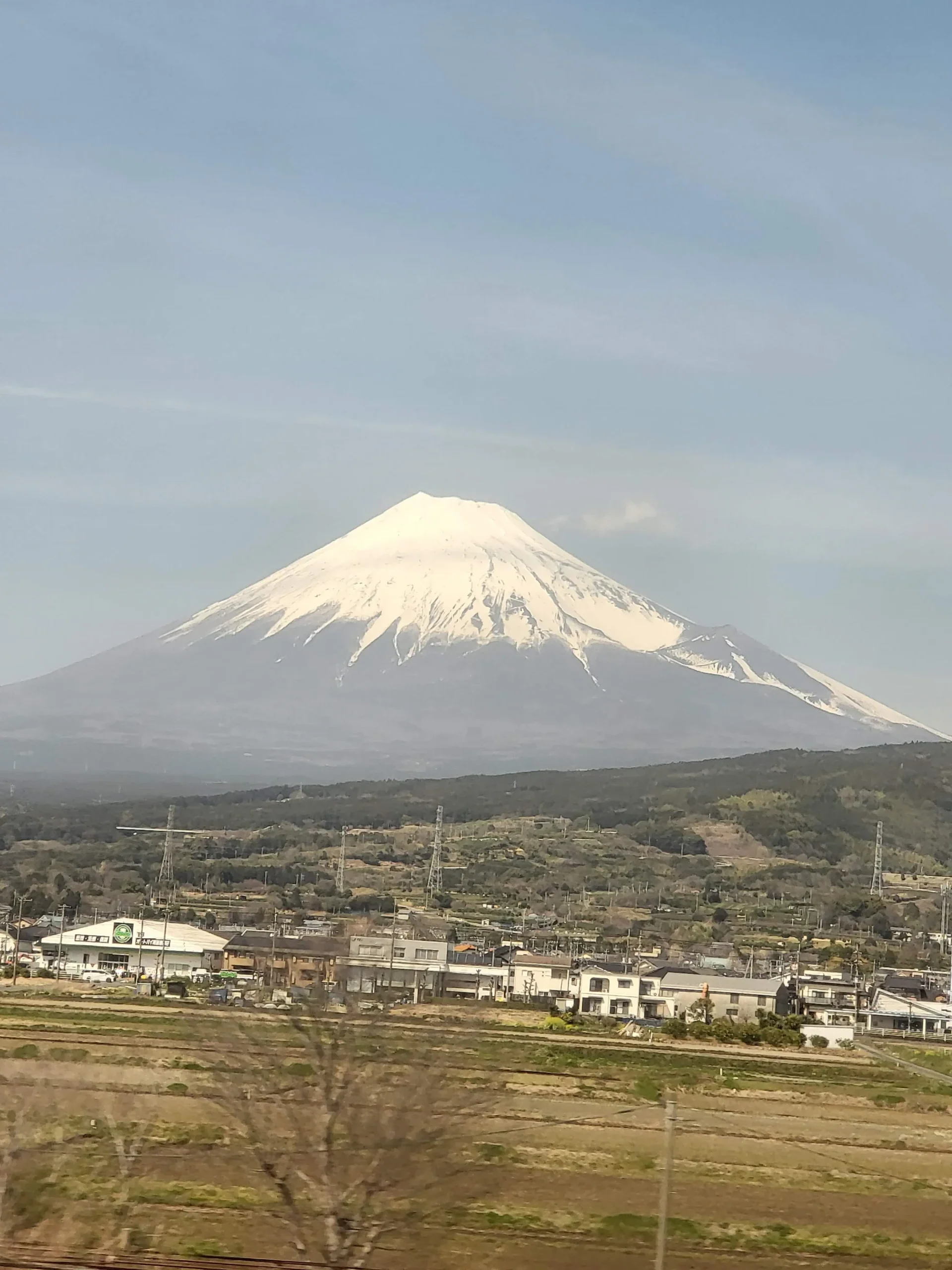
Buses play a crucial role in Japan’s public transport system, offering flexibility and access to areas not served by trains or subways. During our travels, we’ve utilised buses for various tours around Japan, enhancing our exploration of both urban and rural landscapes. For instance, departing from Tokyo, we embarked on a bus tour to Mount Fuji, enjoying the scenic journey and convenient access to this iconic natural wonder.
In Osaka, we also experienced the convenience of bus travel when we opted for a tour bus to Kyoto. This mode of transport provided a comfortable and straightforward way to visit Kyoto’s historical sites and cultural attractions, showcasing the efficiency and reliability of Japan’s intercity bus network.
Japan’s buses are divided into several categories, including local buses that serve city and suburban routes, highway buses connecting major cities and regions, and specialised tour buses tailored for sightseeing purposes. Understanding how to read bus schedules and route maps is essential for maximising the use of these services, along with convenient payment options such as cash, IC cards like Suica or Pasmo, or bus passes for frequent travellers.
In 2024, advancements in Japan’s bus transport system continue to improve passenger comfort and accessibility, making buses an integral part of travelling around the country, whether for daily commuting or exploring new destinations.
5. Taxis and Ride-Sharing
Taxis and ride-sharing services in Japan provide flexible and convenient travel options, especially when public transport may not be as accessible or when you prefer a more direct route. During our travels, we found taxis to be particularly useful for short distances and for navigating areas where buses or trains were less frequent.
Japanese taxis are known for their cleanliness, safety, and courteous drivers. Most taxis are equipped with GPS, ensuring efficient navigation even if the driver does not speak English. However, it’s helpful to have your destination written in Japanese to avoid any confusion. Taxis can be hailed on the street, found at taxi stands, or booked through hotel concierges.
Ride-sharing services, while not as widespread as in some other countries, are available in larger cities. Apps like Go Taxi App and Uber provide options for booking rides directly from your smartphone. These services offer the convenience of cashless payments and real-time tracking of your ride.
Taxi fares in Japan are regulated and based on distance and time. While they can be more expensive than other modes of transport, taxis are reliable, especially late at night when public transport options are limited. It’s important to note that tipping is not customary in Japan, and taxi drivers will politely refuse any extra payment.
In 2024, ride-sharing services continue to grow, offering more options for travellers seeking convenience and flexibility. Whether you’re navigating the bustling streets of Tokyo or exploring quieter neighbourhoods, taxis and ride-sharing services are excellent choices for personalized and comfortable travel.
6. Ferries
Ferries are an integral part of Japan’s public transport system, particularly for connecting the country’s many islands. They offer a scenic and leisurely way to travel, providing unique views of Japan’s coastal landscapes. During our travels, we found ferries to be an enjoyable mode of transport, especially when visiting destinations like Miyajima and Okinawa.
Key ferry routes include services between Hiroshima and Miyajima, where you can visit the famous Itsukushima Shrine, and routes connecting the main islands to smaller, less accessible ones. Ferries also operate between the main islands of Honshu, Shikoku, and Kyushu, offering an alternative to air and rail travel.
Booking ferry tickets can be done online, at ferry terminals, or through travel agencies. Many ferries accept IC cards like Suica or Pasmo, and some even offer the option of reserving seats in advance. It’s advisable to check the schedule and book early, especially during peak travel seasons and holidays.
In 2024, ferry services in Japan have seen improvements in terms of comfort and sustainability. Newer ferries are equipped with modern amenities, making longer journeys more pleasant. Additionally, eco-friendly initiatives are being implemented to reduce the environmental impact of ferry travel.
Ferries not only serve as a practical means of transport but also provide a memorable travel experience, allowing you to enjoy the beauty of Japan’s coastal regions. Whether you’re planning a day trip or a longer journey, incorporating ferry travel into your itinerary can add a unique dimension to your exploration of Japan.
7. Navigating Public Transport as a Tourist
Navigating public transport as a tourist in Japan can seem daunting, but with the right tools and tips, it becomes much easier. One invaluable resource we found during our travels is the Japan Transit Planner. This online tool provides detailed route planning, helping us efficiently navigate the complex transport networks in cities like Tokyo and Osaka.
The Japan Transit Planner allows you to input your starting point and destination, and it offers various route options, including transfers between trains, subways, and buses. It also provides information on travel times, costs, and train schedules, making it an essential tool for anyone travelling in Japan. Additionally, it supports multiple languages, which is a significant advantage for non-Japanese speakers.
For non-Japanese speakers, carrying a pocket Wi-Fi device or ensuring you have mobile data access is crucial for using navigation apps and translation tools. Apps like Google Maps and Hyperdia are also handy for real-time navigation and timetable checking.
Understanding and respecting local etiquette on public transport is essential. Keep noise levels down, set your phone to silent mode, and avoid talking on the phone while in transit. If you have large luggage, use designated storage areas to keep aisles clear.
If you lose an item on public transport, Japan’s efficient lost-and-found system can help you recover it. Reporting the lost item to station staff or using online forms can often result in the item’s swift return.
Overall, Japan’s public transport is tourist-friendly, especially with tools like the Japan Transit Planner. By planning ahead and familiarising yourself with local customs, you can navigate Japan’s transport system with ease and confidence.
This comprehensive guide to public transport in Japan ensures you have all the tips and resources needed for a smooth travel experience.
8. Accessibility and Special Services
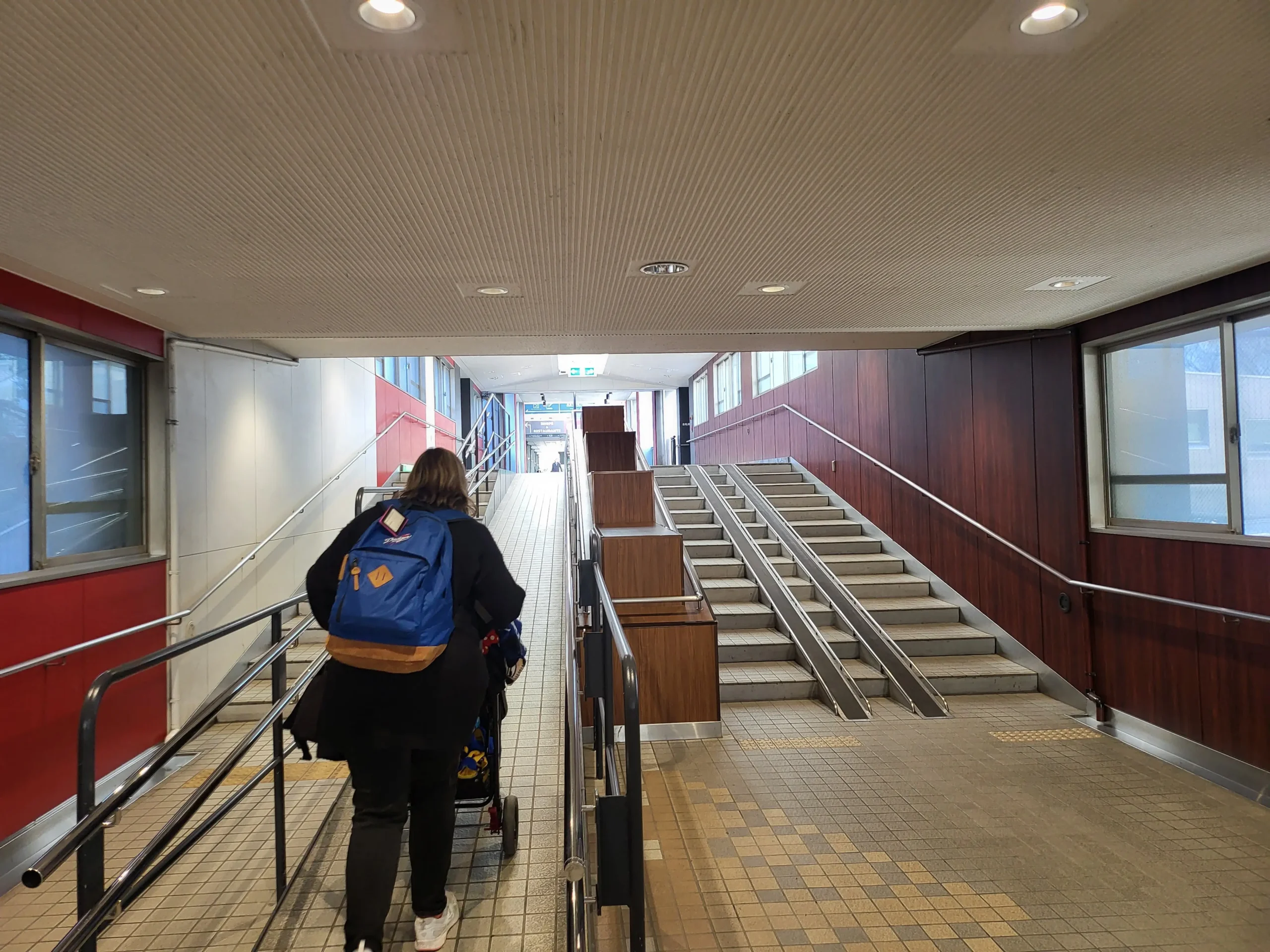
Accessibility and special services in Japan’s public transport system are designed to ensure that everyone, including those with disabilities, elderly passengers, pregnant women, and families with young children, can travel comfortably and safely. During our last trip to Japan, we travelled with a small child and used a pram on the trains. We found it easy to get around using public transport, as lifts were available at all stations we visited, facilitating smooth and hassle-free access.
Many train and subway stations are equipped with elevators, escalators, and ramps, making it convenient for wheelchair users and those with mobility issues, as well as families with prams. Priority seating is available on trains, buses, and subways, clearly marked and located near the doors to accommodate passengers who need it most. These seats are intended for elderly passengers, pregnant women, individuals with disabilities, and those with small children.
Additionally, tactile paving is widespread in stations and on sidewalks, helping visually impaired passengers navigate their way safely. Audible signals at crossings and in stations also assist in providing crucial information to those with visual impairments.
For travellers with hearing impairments, me included, visual information systems, such as electronic displays and digital signs, are prevalent, ensuring they can access important travel information easily. Some newer train models also include video screens that display upcoming stops and other announcements.
Special services such as reserved seating areas and assistance dogs are also supported across the transport network. In larger stations, you can often find dedicated staff members who provide assistance, including helping passengers board trains and offering information about accessible facilities.
In 2024, Japan continues to improve and expand its accessibility features, striving to make public transport as inclusive as possible. These ongoing efforts ensure that everyone, including families with young children, can enjoy the convenience and efficiency of travelling in Japan, regardless of their specific needs.
9. Safety and Security
Safety and security are paramount in Japan’s public transport system, ensuring a safe and pleasant journey for all passengers. During our travels, we were particularly amused by the creative and entertaining videos that played on the trains to highlight various safety tips. These videos, often featuring animated characters or humorous scenarios, effectively conveyed important safety messages in an engaging way.
Japan’s public transport system is renowned for its cleanliness and orderliness. Passengers are expected to follow specific etiquette, such as keeping noise levels down and not eating or drinking on the trains. These rules contribute to a calm and respectful environment, enhancing the overall travel experience.
Emergency procedures are clearly outlined in both Japanese and English, ensuring that non-Japanese speakers can easily understand what to do in case of an emergency. Stations and trains are equipped with emergency buttons and intercom systems that allow passengers to contact staff immediately if they need assistance.
Security measures in 2024 have been further enhanced with the introduction of more CCTV cameras and increased patrols by security personnel. This added vigilance helps deter potential threats and ensures a quick response to any incidents.
Overall, the focus on safety and security in Japan’s public transport system, combined with entertaining safety videos and a strong sense of passenger etiquette, ensures a secure and enjoyable travel experience for everyone.
Guide to Public Transport in Japan: Final Thoughts
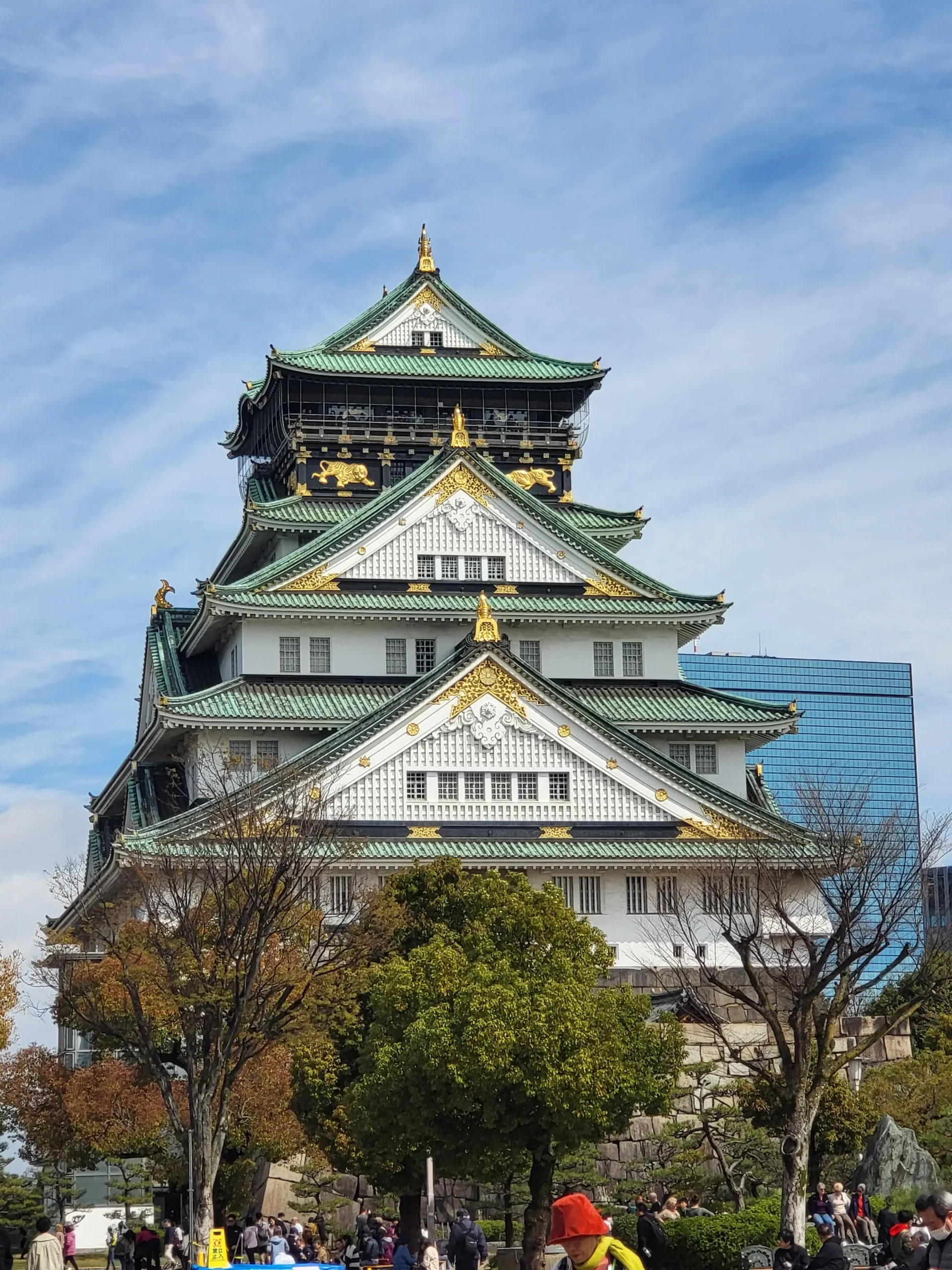
Japan’s public transport system is a testament to the country’s commitment to efficiency, punctuality, and convenience. From the high-speed Shinkansen to the extensive subway networks in cities like Tokyo and Osaka, Japan offers a variety of reliable transportation options that make exploring the country both easy and enjoyable. Our personal experiences, from using the subways with a pram to taking scenic bus tours to iconic destinations like Mount Fuji and Kyoto, have underscored the accessibility and user-friendliness of this remarkable system.
Whether you’re a tourist looking to soak in the cultural richness of Japan or a resident commuting daily, Japan’s public transport system is designed to meet your needs. The integration of digital tools like the Japan Transit Planner, along with convenient payment options such as the Welcome Suica card for travellers, ensures that navigating this system is straightforward even for those new to Japan.
If you’re planning a cherry blossom trip with family, our guide to family-friendly cherry blossom trips in Japan explains how to pair transport with comfortable spring experiences.
The emphasis on safety and security, along with continuous improvements in accessibility, reflects Japan’s dedication to providing a world-class public transport experience. As we look to the future, the ongoing innovations and expansions will only enhance the efficiency and comfort of travelling across Japan.
In 2025, whether you’re planning to explore bustling urban centres or serene rural landscapes, Japan’s public transport system offers a reliable, efficient, and enjoyable way to see all that this beautiful country has to offer. We hope this comprehensive guide to public transport in Japan helps you navigate and appreciate the incredible transport network in Japan, making your journey as smooth and memorable as ours.
FAQs
How do I purchase and recharge a Welcome Suica card?
You can purchase a Welcome Suica card at major train stations, airports, and designated vending machines. The card is valid for 28 days and can be recharged at ticket machines, convenience stores, or station kiosks. Simply follow the on-screen instructions to add funds to your card.
Are there any discounts available for children on public transport?
Yes, children under the age of 6 can travel for free on most public transport systems in Japan, provided they are accompanied by a paying adult. Children aged 6 to 12 generally receive a 50% discount on fares. Be sure to check the specific rules for each transport service as they may vary slightly.
What should I do if I miss the last train or bus?
If you miss the last train or bus, you can use a taxi or ride-sharing service to reach your destination. Alternatively, many cities have 24-hour convenience stores and some late-night cafés where you can wait until public transport services resume in the morning.
How can I transport large luggage on trains and subways?
On the Shinkansen and some other long-distance trains, there are designated areas for storing large luggage. For local trains and subways, it’s advisable to avoid peak hours and use the luggage racks above the seats or place your luggage in the space provided at the end of each carriage. Always ensure that your luggage does not obstruct aisles or doors.
Can I use my foreign credit card to purchase tickets or recharge IC cards?
Most major train stations, bus terminals, and ticket machines accept foreign credit cards. Additionally, convenience stores that offer IC card recharging services usually accept international credit and debit cards. However, it’s a good idea to carry some cash as a backup, especially when travelling to more rural areas where card acceptance may be limited.
Additional Resources
Official Transport Websites:
Recommended Travel Apps:
- Japan Transit Planner (iOS)
- Japan Transit Planner (Android)
- Hyperdia
- Google Maps
- JapanTaxi
- Uber Japan
Tourist Information Centers:
- Japan National Tourism Organization (JNTO)
- Tokyo Tourist Information Center
- Location: Tokyo Station, Marunouchi Central Exit
- Phone: +81 3-3201-3331
- Email: [email protected]
- Osaka Tourist Information Center
- Location: Osaka Station, Umeda Area
- Phone: +81 6-6345-2189
- Email: [email protected]
These resources will help you navigate Japan’s public transport system and enhance your travel experience. For personalised assistance, contact the nearest tourist information centre.



